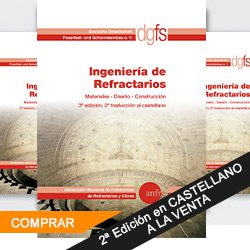What is the Global Arrangement on Sustainable Steel and Aluminium?
The arrangement is intended to facilitate the decarbonising of the steel and aluminium industries, as
well as addressing the issue of overcapacity in these industries caused by non-market practices in
some economies.
The EU and US have agreed to start discussions on this Arrangement as soon as possible, and
conclude them within two years. We want to make this Arrangement open to all like-minded
economies.
How will the Arrangement help achieve decarbonisation?
Each participant in the arrangement should undertake to facilitate trade in steel and aluminium that
meets relevant standards, for instance as regards low-carbon intensity.
They should ensure that domestic policies support the production of steel and aluminium with low
carbon intensity.
In addition, they should consult on government investment in decarbonisation, and refrain from nonmarket practices that contribute to high carbon intensity steel and aluminium production.
How will the Arrangement restore market-oriented conditions in the steel trade?
Each participant will promote trade in carbon friendly steel and aluminium.
Each participant will ensure that domestic policies encourage “Green Steel and Aluminium
production”.
Participants would undertake to apply measures in line with their trade defence rules.
Moreover, they will refrain from non-market practices that contribute to non-market oriented
capacity.
They will also screen inward investments from non-market-oriented actors in accordance with their
respective domestic legal framework.
Is this Arrangement exclusive to the EU and the US?
No; the EU and the US will encourage other like-minded economies to participate.
Will you negotiate one arrangement for both sectors or two separate arrangements?
This is not yet decided, and will depend upon further consultations between the EU and US and with
the respective industries.
What did the US do with the Section 232 tariffs?
The US has announced that it will no longer apply the Section 232 tariffs on a certain amount of EU
exports of steel and aluminium (under “tariff-rate quotas” (TRQs)), effective as of 1st January 2022.
These TRQs amount to the historical volumes of EU steel and aluminium exports to the US.
What are “historical volumes”?
The volume of EU steel and aluminium that was exported to the US prior to the imposition of the 232
measures in 2018 and the volume of EU aluminium prior to 2020 with exception of aluminium foil for
which the baseline is annualised 2021 data.
What is the EU doing in response?
The EU intends to suspend as of 1 January 2022 its rebalancing measures against the US that were
introduced in June 2018 in response to the US Section 232 tariffs on steel, aluminium and derivative
products. It will also continue without interruption the suspension of the increase in rebalancing
measures (so-called “second tranche”) set for 1 December 2021.
In addition, the EU has agreed with the US that both sides will hit the pause button on their
respective WTO cases against each other.
What are the “rebalancing measures”?
The US tariffs applied towards the EU from June 2018 affected €6.4 billion of European steel and
aluminium exports, and further tariffs applied from February 2020 affected around €40 million of EU
exports of certain derivative steel and aluminium products.
In response, the EU introduced rebalancing measures in June 2018 on US exports to the EU in a
value of €2.8 billion.
The remaining rebalancing measures, affecting exports valued up to €3.6 billion, were scheduled to
enter into force on 1 June 2021. The EU suspended these measures until 1 December 2021 in order
to give space for the parties to work together to reach a longer-term solution.
Following today’s announcement by the US, all these measures will be suspended.
What are the next steps?
The EU will initiate its decision-making procedure under the EU Trade Enforcement Regulation with a
view to suspend the rebalancing measures. The decision-making involves an examination and voting
procedure with Member States.
How will this help EU workers and business?
The removal of the Section 232 tariffs on historical volumes of EU exports of steel and aluminium
should reduce costs for steel and aluminium exporters, helping to support the sustainability of two
industries that together employ 3.6 million people in the EU.



